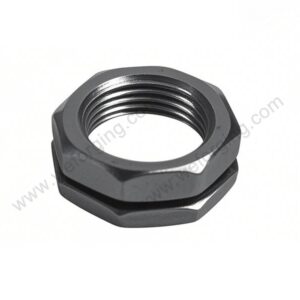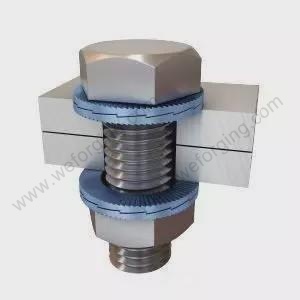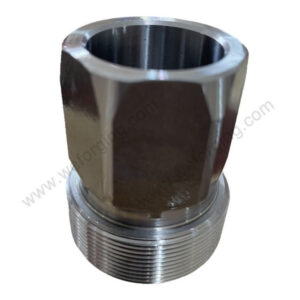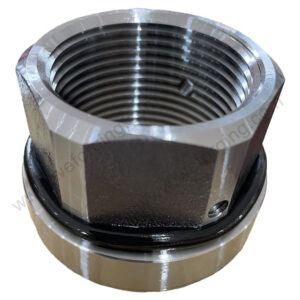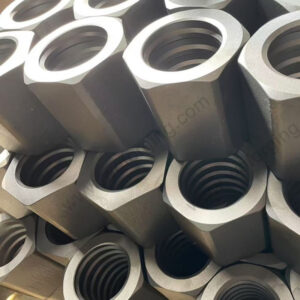-
Hex Nuts and Bolts
Custom Lock Nut | Alloy & Carbon Steel | ISO 9001 Certified
-
Hex Nuts and Bolts
Double Stack Self-Locking Washer | Anti-Loosening Fastener | Alloy Steel
-
Hex Nuts and Bolts
Custom Drive Nut | Cold Forged & CNC Machined Fasteners
-
Hex Nuts and Bolts
Custom Mining Hex Nut | 4140 Alloy Steel | Grade 10″
-
Hex Nuts and Bolts
Hot-Forged Flange Nut | DIN 6927 | 10.9 Grade
Precision Forged Nuts and Bolts
At Weforging, we specialize in manufacturing precision-forged nuts and bolts with exceptional strength, surface finish, and dimensional accuracy.Through an integrated process of hot forging, CNC machining, and heat treatment, we produce reliable fasteners for construction, automotive, mining, and energy industries.Each product is made under ISO 9001:2015 quality standards to ensure durability, consistency, and long-term performance.

What Are Nuts and Bolts?
Nuts and bolts are essential fasteners that securely connect components in machinery and construction assemblies.A bolt includes a head and threaded shaft, passing through aligned holes for precise positioning.The nut, usually hex-shaped, threads onto the bolt and provides strong clamping and locking force.Together, they create a reliable, removable joint that performs well under vibration, tension, and shear.Common types include hex nuts, flange bolts, lock nuts, and stud bolts, each designed for specific applications.These fasteners ensure high strength, accurate alignment, and consistent performance across demanding industrial environments.
Types of Nuts and Bolts
Weforging manufactures a wide range of nuts and bolts designed for different mechanical and environmental requirements. Each type is engineered to deliver reliable fastening strength, precision fit, and corrosion resistance across diverse industries.
Common Types Include:
Hexagon Nuts (Hex Nuts): Standard six-sided nuts widely used for general fastening.
Lock Nuts: Designed with friction or nylon inserts to prevent loosening under vibration.
Flange Nuts and Bolts: Integrated washer base for uniform load distribution.
Heavy Hex Nuts: Thicker and stronger for high-torque structural applications.
Stainless Steel Bolts: Excellent corrosion resistance for marine and outdoor use.
Carriage Bolts: Smooth rounded heads ideal for wood and sheet metal assemblies.
Anchor Bolts: Used for securing machinery or structures to concrete foundations.
All types can be customized through forging, CNC machining, and heat treatment to meet ISO, DIN, or ASTM standards.
Forging and Manufacturing Process
Weforging combines hot forging, cold forging, and CNC machining to ensure precision and strength:
Material Selection – Alloy steel, carbon steel, or stainless steel for specific mechanical demands.
Forging Process – Closed-die or open-die forging ensures uniform grain flow.
CNC Threading & Machining – Guarantees consistent threads and smooth surfaces.
Heat Treatment – Improves strength, fatigue resistance, and wear life.
Surface Treatment – Zinc plating, galvanizing, or passivation for corrosion resistance.
Advantages of Forged Nuts and Bolts
Weforging’s nuts and bolts combine strength, precision, and reliability to meet diverse industrial needs. Each fastener is forged to optimize grain structure, ensuring excellent durability and consistent performance. With CNC machining, every piece maintains precise dimensions and uniform thread quality for accurate assembly. Moreover, advanced surface coatings improve corrosion resistance and extend service life in various working conditions. Engineered for heavy machinery, automotive, and construction systems, these fasteners fully comply with international standards. Each product is digitally tracked under ISO-certified control, ensuring dependable quality and complete process traceability.
Applications
Weforging’s nuts and bolts are engineered to perform reliably across demanding industrial environments, where strength, precision, and durability are essential.
Construction & Infrastructure — Used in bridges, cranes, steel structures, and heavy frameworks requiring high load-bearing capacity and long-term stability.
Automotive & Trucks — Applied in engines, chassis, suspension systems, and transmission assemblies, ensuring vibration resistance and consistent torque performance.
Energy & Wind Power — Forged fasteners designed for turbines, generators, and offshore platforms, providing high fatigue strength and corrosion protection in harsh conditions.
Heavy Industry & Mining — Utilized in crushers, conveyors, and drilling machinery, where wear-resistant assemblies ensure extended service life and reduced maintenance.
Agricultural & Construction Equipment — Custom bolts and nuts for tractors, excavators, and loaders, maintaining structural integrity and operational reliability under cyclic loads.
Marine & Offshore Systems — Stainless steel fasteners for shipbuilding, pumps, and deck machinery, ensuring durability and resistance to saltwater corrosion.
Conclusion
Nuts and bolts are essential fasteners in modern engineering, providing secure, accurate, and durable connections across industries. Such as automotive, construction, energy, and heavy machinery. Made from high-quality carbon steel, alloy steel, or stainless steel, they offer excellent performance under vibration, load, and temperature changes.
At Weforging, we combine forging, CNC machining, and testing to produce reliable and fully traceable fasteners. Our team also offers customized solutions to meet specific design and performance needs, ensuring consistent quality and dependable results in every project.
📩 Contact us today or upload your drawings to request a technical consultation and quotation for your next fastener project.

